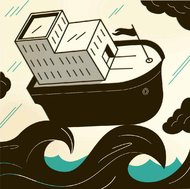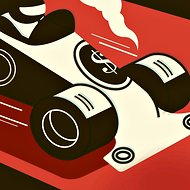 Harry Campbell
Harry Campbell
The important and self-important of global finance are again gathering at the annual World Economic Forum in Davos, Switzerland. This year, the mandatory reading should be two recent reminders from JPMorgan Chase and the Federal Reserve that we are light years from understanding or preventing financial crises.
The reminders come in the form of JPMorgan’s management task force report on the bank’s billions in losses from the “London whale” trade and the released transcripts of the 2007 Federal Reserve meetings. The report and the transcripts provide a sobering lesson that the people who run our financial system not only have a lot of work to do, they still aren’t sure what that work is.
Let’s start with JPMorgan’s $6.2 billion trading loss.
JPMorgan is a huge institution with more than $2 trillion in assets. Banks typically lend their deposits, but for the tens of billions that JPMorgan cannot lend, this remainder is turned over to its chief investment office. This unit is charged with earning returns on this money and also using these billions to hedge the enormous financial institution against bad events.
What happened next was that a number of C.I.O. traders got stuck.
Deal Professor
View all posts
The traders made a complex financial bet that was intended in part to hedge the bank from another big credit disruption. But the trading position became so large — more than $50 billion in notional value — that the JPMorgan traders couldn’t liquidate it without hundreds of millions of dollars in losses. Instead of liquidation, they went in the other direction, adding some $30 billion more in notional value to the portfolio, hoping this would save them. But that trade still didn’t work, and JPMorgan lost an estimated $169 million in the first two months of 2012. It was then that the traders added another $40 billion to the portfolio.
The trade went really bad after that.
In early April, reports emerged of an outsize bet by a JPMorgan trader in London — the “whale.” Hedge funds went on the attack as they took offsetting positions in anticipation that the bank couldn’t hold the trade. The funds were right. JPMorgan lost $412 million on the first trading day after Bloomberg News and The Wall Street Journal reported about the London whale, and the losses would subsequently mount.
The internal report details what went wrong, and it is head-scratching. In the middle of a meltdown, JPMorgan traders fudge numbers, ignore orders, try to evade pesky regulations and in general scramble as they try to salvage their trade. Management races to understand what is going on at the subsidiary while markets go haywire in ways that no one ever expected or that JPMorgan’s models predicted. After the first-day loss of $412 million, Ina R. Drew, then the head of the chief investment office, wrote in an e-mail that it was an “eight sigma event,” according to the report. The Reuters columnist Felix Salmon calculated that the chances of it happening was one in 800 trillion.
Unfortunately, the bank’s trading debacle was just history repeating itself.
You could substitute the names, but this story of self-interest, unexpected market events and huge losses is similar to almost every other financial blowup of the last two decades.
In every instance, the question is: Where were the regulators? Well, one answer comes from the recent release of the transcripts from the 2007 meetings of the Federal Reserve. The transcripts portray a regulator that not only failed to appreciate the risk that had built up in the financial system and the coming storm, but also seemed to misunderstand fundamentally the subprime mortgage market.
For example, in the Federal Reserve’s August 2007 meeting, the mortgage lender Countrywide Financial was described as having a “strong franchise.” Countrywide has since saddled its acquirer, Bank of America, with tens of billions of dollars in losses.
In this meeting, the Federal Reserve governors went on to discuss the economy and noted that despite the recent market turmoil, it had a “reasonably good” chance of returning to its trend growth. The gem from this meeting was a remark by Frederic S. Mishkin, who stated that since “subprime market is really a very small percentage of the total credit markets,” the fact that the markets were now turning a critical eye to this sector was a “good thing.”
It’s all sobering. Not only are financial trading losses hard to predict and manage from the inside, but regulators with a farther view often do not appreciate the risk, the markets or the prospect of the losses. It happened with subprime mortgages and again after the financial crisis with JPMorgan’s trading loss, a loss that even the firm’s chief executive, Jamie Dimon, who had a vaunted reputation as a risk manager, could not prevent.
The JPMorgan report in particular is disheartening. One is struck that nothing we have really done so far in terms of financial reform would have prevented JPMorgan’s loss. Certainly the requirement that boards have systemic-risk committees wouldn’t have done anything. If the traders and JP Morgan’s management can’t monitor things, how could the boards? In fact, how can anyone anticipate a one-in-800-trillion event?
This all adds strength to those who argue to break up the banks or limit their financial activity through the Volcker Rule.
Which brings us to the World Economic Forum.
Flipping through the forum’s program, it is once again filled with events that are Davos-like, like a panel on “Connected Transportation — Hype or Reality.” But nowhere do the words “financial crisis” even appear in the preliminary program, though there is a worthwhile discussion of the crisis in Mali. And flipping through its 80-odd pages, I counted only two panels on big systemic risk issues even tangentially related to financial institutions. Instead, the panels are the same old Davos big think and global stuff, except now instead of about China dominating the world, it is about whether China will make it.
This is a problem. We are five years past the beginnings of the financial crisis, and there is still no real explanation for what happened, let alone a solution. Was it a unique event that should have been foreseen and prevented? How can we regulate these institutions when smart people like Federal Reserve governors can miss so much? And is breaking up banks even feasible in a global economy?
Here, JPMorgan has admirably provided its own self-analysis, and its task force prescribes more risk analysis, better risk models and management — all of the comforting things you would want — as a remedy. But would it really prevent a one-in-800-trillion event, or even just an event its traders didn’t model?
The World Economic Forum and its leaders appear to be moving on, but if the financial titans gathered there are really going to fight off the small but growing number of critics who are calling for the breakup of the big banks or even more likely a stronger Volcker Rule, they should put forth an alternative or an explanation for why these blowups keep occurring. The forum would seem to be an ideal place to do it.
Article source: http://dealbook.nytimes.com/2013/01/22/financial-reports-reveal-economic-challenges-but-few-solutions/?partner=rss&emc=rss




